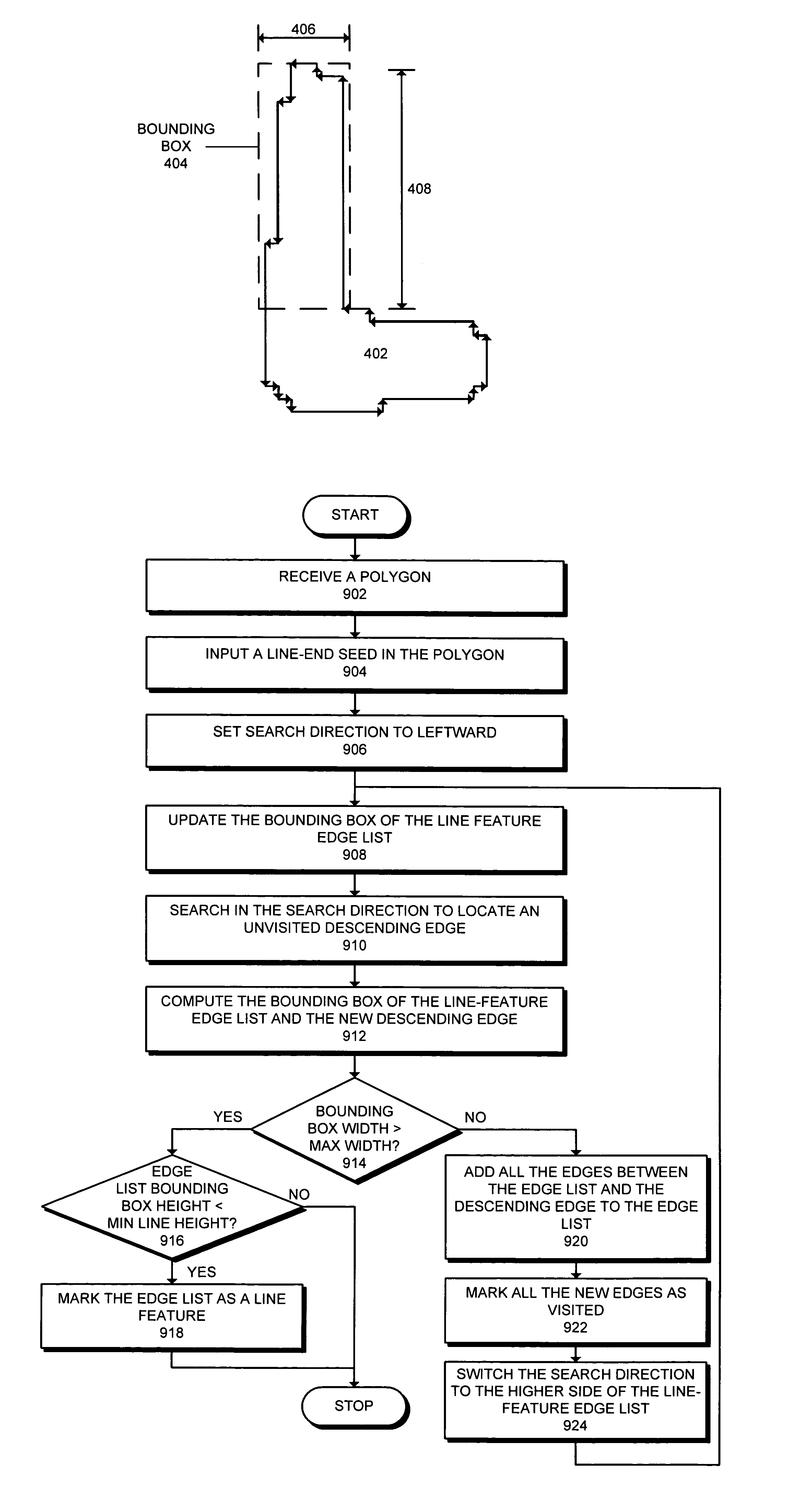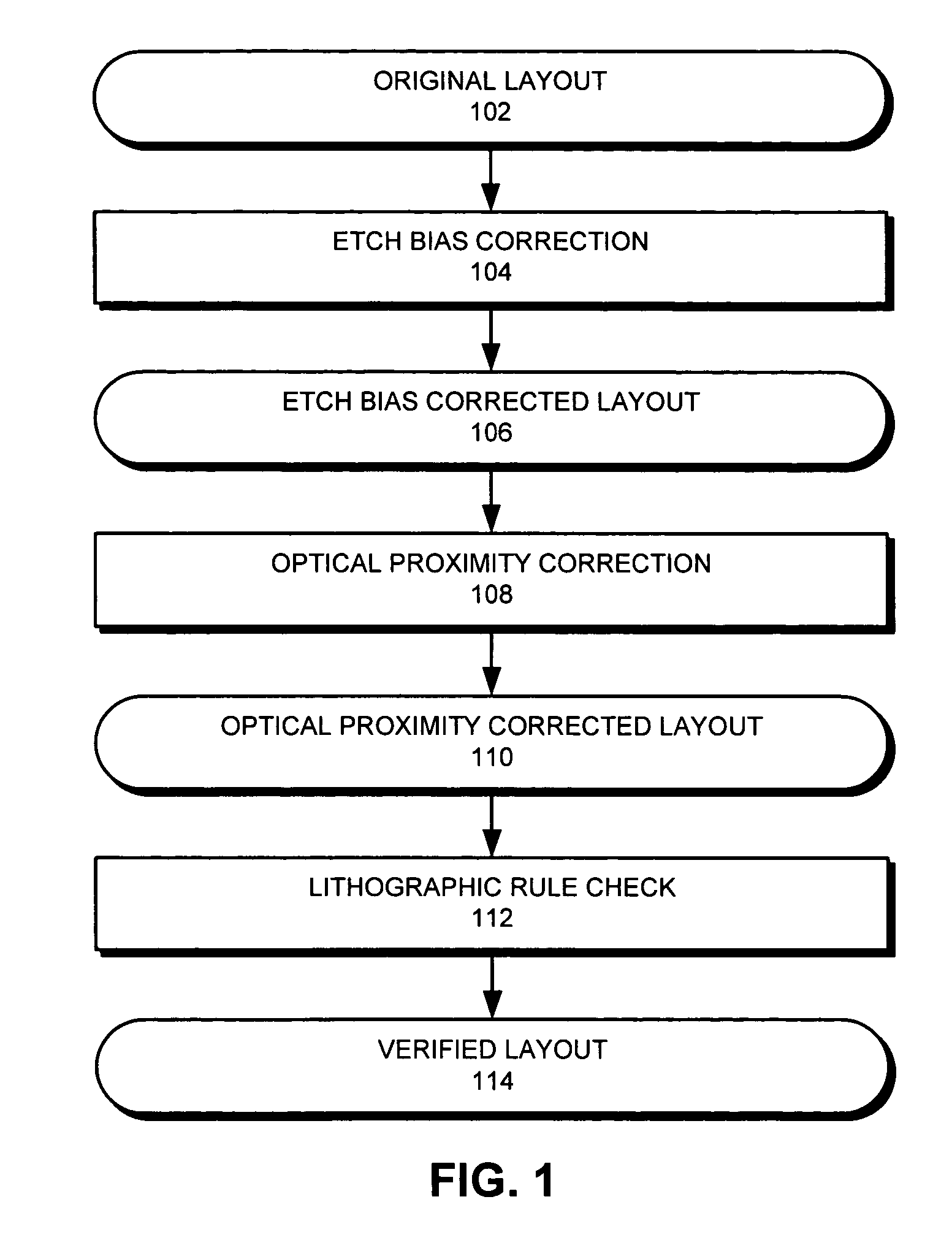Method and apparatus for identifying line-end features for lithography verification
a technology of lithography verification and feature identification, which is applied in the direction of instruments, computing, electric digital data processing, etc., can solve the problems of difficulty in identifying line-end features, distorting and more computationally expensive simulation of the final printed image of the circuit layout. achieve the effect of facilitating the identification of line-end features
- Summary
- Abstract
- Description
- Claims
- Application Information
AI Technical Summary
Benefits of technology
Problems solved by technology
Method used
Image
Examples
Embodiment Construction
Data Flow
[0027]FIG. 1 illustrates a process flow in accordance with an embodiment of the invention. The system starts with original layout 102. Original layout 102 is then processed for etch bias correction 104 resulting in an etch-bias-corrected layout 106. Next, the etch-bias-corrected layout 106 is subjected to optical proximity correction 108 yielding optical-proximity-corrected layout 110. Optical-proximity-corrected layout 110 is then subjected to a lithographic rule check 112, which results in verified layout 114.
Artifacts Added by Corrections
[0028]FIG. 2 illustrates artifacts added to a polygon during etch bias correction and optical proximity correction in accordance with an embodiment of the invention. A polygon 202 from original layout 102 is shown in FIG. 2. Note that identifying line-ends on polygon 202 is a straight-forward process and can be accomplished with relatively simple calculations.
[0029]The etch-bias correction process 104 transforms polygon 202 into polygon ...
PUM
 Login to View More
Login to View More Abstract
Description
Claims
Application Information
 Login to View More
Login to View More - R&D
- Intellectual Property
- Life Sciences
- Materials
- Tech Scout
- Unparalleled Data Quality
- Higher Quality Content
- 60% Fewer Hallucinations
Browse by: Latest US Patents, China's latest patents, Technical Efficacy Thesaurus, Application Domain, Technology Topic, Popular Technical Reports.
© 2025 PatSnap. All rights reserved.Legal|Privacy policy|Modern Slavery Act Transparency Statement|Sitemap|About US| Contact US: help@patsnap.com



